Top 10 Destinations for Vietnam Veterans Tours
For many veterans who have fought in Vietnam, returning to the country is a personal journey. Some come to remember, others to understand what has changed, and many to find closure. Vietnam today is peaceful, welcoming, and full of reminders of its past. If you're thinking about retracing your steps or learning more about what happened during the war, we’ve put together a list of the Top 10 destinations for Vietnam Veterans Tours. These places hold deep historical value, and each offers a different piece of the story, taking you from major battlefields and tunnel networks to prisons and former command centers. This guide will help you plan a meaningful visit across the country’s north, central, and southern regions.
Top 10 destinations for Vietnam Veterans Tours
Hanoi
Hanoi is the capital of Vietnam and a city that carries the weight of history on every street. During the war, it was the political and military headquarters of North Vietnam. You’ll find many key locations connected to the American War (as it's called in Vietnam) as well as the earlier struggles against the French and Japanese.
What to see:
Hoa Lo Prison (Hanoi Hilton): This site once held American POWs, including Senator John McCain. Today, it’s a museum. Most of the exhibits focus on its use under French rule, but there are displays showing the American period. It's sobering and thought-provoking.
B-52 Lake (Huu Tiep Lake): You can still see the wreckage of a B-52 bomber shot down during the 1972 “Christmas Bombing” campaign. It sits in a quiet neighborhood. There's not much signage, but seeing it in the middle of daily life is powerful.
Vietnam Military History Museum: This museum covers many wars, not just the one with the U.S. Outside, you'll see aircraft and tanks, including wreckage from U.S. planes. Inside, the presentation feels one-sided, but it’s important to see how the war is told from the Vietnamese point of view.
John McCain Memorial at Truc Bach Lake: This is where McCain’s plane was shot down. There’s a small stone monument. The area around the lake is peaceful and modern now, but the marker remains.
Hanoi is also a good base for visiting other sites in Northern Vietnam. It’s well-connected and easy to get around with a guide or on your own.
Dien Bien Phu
Dien Bien Phu is not directly connected to the American War, but it's critical to understanding the roots of Vietnam’s struggle. This is where the Vietnamese defeated the French in 1954, ending French colonial rule in Indochina. That victory helped set the stage for what came later, including the U.S. involvement.
You should come here if you want to go back to the beginning of the conflict. The site is remote, about an hour by plane from Hanoi or a half day's drive through the mountains.
What to see:
Dien Bien Phu Museum: This is the best place to start. It explains the 56-day battle with maps, photographs, weapons, and models. There’s also a large diorama showing how the Vietnamese surrounded the French.
A1 Hill (Eliane 2): One of the bloodiest battle sites. You can walk through trenches and tunnels that were used during the fight. There’s also a small monument and bunkers.
General de Castries’ Bunker: This was the French command post. It’s preserved and open to visitors. You can walk around the dugout and see the conditions under which the French leaders surrendered.
Cemeteries and Memorials: There are Vietnamese and French cemeteries in the area. Visiting them gives you a moment of quiet and respect.
Dien Bien Phu is still developing for tourism. The area feels more raw and untouched than the big cities. It's not easy to reach, but if you’re interested in the deeper history, it’s worth the effort.
Hue
Hue saw some of the most intense and tragic fighting of the war, especially during the 1968 Tet Offensive. For veterans, this city can stir deep emotions. It was once the imperial capital of Vietnam, and during the war, it was also a key strategic location.
In the Tet Offensive, North Vietnamese and Viet Cong forces launched a surprise attack and took over the city for almost a month. The battle was brutal. Many soldiers and civilians died. The scars are still visible in places.
What to see:
Citadel and Imperial City: This ancient structure became a battlefield during the Tet Offensive. Heavy fighting took place in and around the walls. Today, the area is partly restored. Some buildings still show damage, and local guides can walk you through the battle’s events.
Thien Mu Pagoda: This Buddhist temple wasn’t a combat site, but it played a symbolic role. It gives context to the deeper tensions that led to the war. Thich Quang Duc, the monk who famously self-immolated in protest of the government's policies in 1963, drove to this temple in his blue Austin car.
Dong Ba Market Area: This was one of the hotspots during the battle. It has been rebuilt, but if you know the history, it takes on a different meaning as you walk through it.
Hue is one of the most emotional stops on any veteran tour. It’s also a beautiful place with a peaceful atmosphere today, which contrasts sharply with what happened here.
Danang and Quang Nam
Danang was one of the first places U.S. combat troops landed in 1965. It became a major U.S. base during the war, with airfields, supply lines, and large military installations. Quang Nam province, where Hoi An is located, saw heavy ground fighting, especially in rural and mountainous areas. These two places are usually visited together because of their location and shared history.
What to see:
Marble Mountains: U.S. Marines used the nearby airbase during the war, and the Viet Cong used caves inside the Marble Mountains to store weapons and hide. You can still go into the caves, and some have small shrines and war-related displays. From the top, you get a wide view of the old base area.
My Khe Beach (formerly China Beach): This was the R&R beach for American soldiers. Today it’s a modern resort area, but veterans often stop here to recall moments of rest between missions. It's also a place where the war feels distant, which some veterans find comforting.
Former Danang Airbase: It’s now part of the civilian airport, but parts of the old base remain. You can still spot old bunkers and taxiways if you know where to look or go with a guide.
Hoi An: While the town itself was mostly spared during the war, the surrounding countryside wasn’t. The area was contested by both sides. Some veterans who served in the area like to visit Hoi An for peace and reflection. It’s quiet now, but locals still remember the past.
Hill 55, Hill 63, and Liberty Bridge (southwest of Danang): These hills were heavily contested and controlled by U.S. Marines at different times. You’ll need a knowledgeable guide to visit them, as they are outside the city and not marked well.
Danang and Quang Nam offer a combination of direct military history and quiet places to reflect. The contrast between past and present is clear here.
Quang Ngai
Quang Ngai province was a hotbed of insurgency and U.S. counterinsurgency operations. It’s best known for the My Lai Massacre, one of the most tragic events of the war. Veterans who served in this region often return with heavy hearts. Visiting Quang Ngai is difficult for some, but it can also provide closure.
What to see:
My Lai Memorial (Son My Memorial): This is the most important stop in the province. The memorial and museum are located at the site of the massacre where hundreds of unarmed Vietnamese civilians were killed by U.S. troops in 1968. The museum shows graphic photos and survivor testimonies. Some displays are hard to see, but they are honest. Outside, you can walk through what’s left of the village paths and foundations.
Quang Tri
Quang Tri was one of the most heavily bombed provinces during the war. It was right along the Demilitarized Zone (DMZ) that divided North and South Vietnam. If you served near the border or were involved in operations like Lam Son 719, Operation Pegasus, or the Easter Offensive of 1972, this region will feel familiar.
What to see:
Vinh Moc Tunnels: These underground tunnels were dug by civilians to escape bombing. Entire families lived underground for years. You can walk through parts of the tunnel system. It’s tight and dark, but it gives you a clear sense of how people survived here.
Khe Sanh Combat Base: A major U.S. Marine base and the site of a key siege in 1968. Today, there’s a small museum, aircraft remains, and trench reconstructions. Some areas are still off-limits due to unexploded ordnance.
Camp Carroll and The Rockpile: These former U.S. bases sit in remote areas. The Rockpile is a steep, isolated hill that served as an observation post. It’s visible from the highway but not easy to climb. Camp Carroll is now farmland, with only a small memorial stone marking its location.
Ben Hai River and Hien Luong Bridge: This river was the official dividing line between North and South Vietnam. The bridge was bombed and rebuilt several times. The museum nearby explains its history and includes propaganda displays from both sides.
Quang Tri remains deeply scarred by war, both physically and emotionally. It’s not as developed as Hue or Danang, but the rawness adds to its power. Veterans who served near the DMZ often find this one of the most meaningful stops on their trip.
Con Dao
Con Dao is a group of islands off the southern coast of Vietnam. During the war and long before, Con Dao Island was known as one of the harshest prison systems in the country. The French built the prison complex, and the South Vietnamese government used it to detain political prisoners, many of whom supported the North.
What to see:
Con Dao Prison Complex: This site includes the infamous “Tiger Cages,” which were small, roofless cells where prisoners were exposed to extreme sun and abuse. The prison museum displays disturbing photos and stories of inmates. If you're a veteran, walking through these grounds might bring up complex feelings, it's sobering and raw.
Hang Duong Cemetery: Many prisoners died in Con Dao, and this cemetery holds their remains. One of the most visited graves here is that of Vo Thi Sau, a national heroine. Visitors often come at night to light incense and pay their respects.
The island today is quiet and scenic, with good roads, small villages, and beaches. It’s a peaceful place, but the past is always close by.
Saigon
Saigon was the capital of South Vietnam and the seat of the U.S.-backed government. The city saw less combat than other regions, but it played a central role in the war’s command, politics, and the final moments of 1975.
What to see:
Reunification Palace (formerly Independence Palace): This was the headquarters of the South Vietnamese president. On April 30, 1975, North Vietnamese tanks crashed through the front gate, marking the end of the war. You can tour the underground bunkers and war rooms, which remain much as they were in the 1970s.
War Remnants Museum: One of the most visited war museums in Vietnam. It displays aircraft, weapons, and stark images of the war’s impact, including Agent Orange and civilian casualties. Veterans might find some exhibits heavy or one-sided, but they reflect the Vietnamese perspective and are worth seeing.
U.S. Embassy Site: The original embassy was torn down, but you can still visit the location, now the U.S. Consulate. In 1975, the building became the focal point of the helicopter evacuation. The image of people trying to board from the rooftop is one of the war’s most iconic.
Saigon is a modern, busy city now. But if you served here or knew someone who did, you’ll still find traces of the past.
Cu Chi Tunnels
About 30 miles northwest of Saigon, Cu Chi is one of the most well-known tunnel systems used by the Viet Cong during the war. These tunnels stretched for over 150 miles and allowed guerrilla fighters to move undetected, hide supplies, and launch surprise attacks.
What to see:
Cu Chi Tunnel System (Ben Dinh or Ben Duoc): You can visit either the more touristic Ben Dinh site or the less crowded Ben Duoc section. Both offer a chance to crawl through reconstructed tunnels, view booby traps, and see how the fighters lived underground. It's a powerful reminder of how resourceful and determined the local fighters were.
War Exhibits and Crater Fields: You’ll also see B-52 bomb craters, command centers, and kitchens hidden under the jungle. It’s not just a tourist site, it tells you a lot about the strategy and endurance of the Vietnamese during the war.
Cu Chi is educational and gives real insight into how the North fought against a stronger military force.
Phu Quoc
Phu Quoc is now known as a beach destination, but during the war, it was home to the largest prison in South Vietnam. The prison held tens of thousands of North Vietnamese soldiers and political prisoners.
What to see:
Phu Quoc Prison (Coconut Tree Prison): This was a POW camp run by the South Vietnamese with U.S. support. The site now includes reconstructed prison blocks, torture devices, and life-size mannequins that show the brutal conditions. It's uncomfortable but important to see.
Phu Quoc also has some war memorials, but most of the island now focuses on tourism. If you’re looking for both history and time to rest, this might be a good place to end your trip.
Vietnam Veterans Tour Itinerary
North Vietnam (5 Days)
Hanoi
- Visit the Ho Chi Minh Mausoleum, Military History Museum, Hoa Lo Prison (Hanoi Hilton)
- Stroll around Hoan Kiem Lake and explore the Old Quarter
Dien Bien Phu
- Fly or drive to Dien Bien Phu
- Explore the battlefield, A1 Hill, Muong Thanh Bridge, and the war museum
- Reflect at the cemetery for fallen Vietnamese soldiers
Central Vietnam (5–6 Days)
Hue
- Visit the Imperial City and explore battle sites from the Tet Offensive
- Stop at Thien Mu Pagoda and walk along the Perfume River
Quang Tri
- DMZ tour: Hien Luong Bridge, Ben Hai River, Vinh Moc Tunnels
- Khe Sanh Combat Base and museum
Danang & Quang Nam
- Drive along Highway 1 and over Hai Van Pass
- Visit former airbase sites and Marble Mountain caves used as field hospitals
- Explore Hoi An if time allows (not war-related, but relaxing)
South Vietnam (5 Days)
Saigon (Ho Chi Minh City)
- Reunification Palace, War Remnants Museum, former U.S. Embassy site
Cu Chi Tunnels
- Day trip from Saigon to explore tunnel warfare
Con Dao or Phu Quoc (Choose one)
- Con Dao: Prison system and Hang Duong Cemetery
- Phu Quoc: Coconut Tree Prison
- Spend some time at the beach
Tips for a Vietnam Veterans Tour
Prepare Emotionally: Some sites like Con Dao Prison or the War Remnants Museum can be intense. Expect different perspectives. Take breaks if needed and let yourself feel what comes up.
Go With a Guide: Veteran-focused guides or DMZ specialists (especially in Quang Tri and Cu Chi) can provide stories that regular guides often skip. Many have personal or family connections to the war.
Time It Right: Avoid major holidays like Tet, when museums and war sites may close or be overcrowded. Spring (March–May) and autumn (September–November) are the best for weather and travel.
Be Open-Minded: Vietnam’s war museums often reflect the North Vietnamese viewpoint. You may disagree with some of the narrative, but it helps to understand their story, too.
Pack Smart: You’ll visit cities, jungles, tunnels, and coastal areas. Bring light clothes, good walking shoes, sun protection, and a flashlight for tunnel visits.
Stay Comfortable: You can book hotels with Western comforts in all major destinations. Many veterans prefer quiet, smaller hotels to avoid big crowds and noise.
Combine War History With Healing: Balance tough war visits with peaceful places. Add time in Hoi An, Halong Bay, or the Mekong Delta to process your journey.
Conclusion
The Top 10 destinations for Vietnam Veterans Tours are more than historical markers; they carry real stories, memories, and lessons. You’ll walk through former combat zones, visit old command posts, and hear stories from both sides of the war. If you're ready to take a meaningful journey through Vietnam’s wartime history, we’re here to help. Book a customized veterans tour with our agency and let us guide you through the places that shaped history.
>>> Map of Dien Bien—A Timeless Land of History and Poetic Beauty
>>> Best Cu Chi Tunnels Tour From Ho Chi Minh City
Send us your comments about : Top 10 Destinations for Vietnam Veterans Tours
Required fields *
You might also be interested
Travel ideas
Need some inspiration? Discover some of the best tours in Vietnam, which are highly appreciated by our clients. An excellent starting point to help you choose the right trip to Vietnam, Laos, Cambodia, Burma or Thailand, whether you are traveling alone, as a couple, as a family or with friends.
And because this trip is yours, feel free to customize it as you wish!
Vietnam Cambodia Itinerary 14 Days
Hanoi – Hoa Binh – Mai Chau – Ninh Binh – Halong bay – Hue - Danang – Hoian – Saigon – Ben Tre - Can Tho – Saigon - Siem Reap Angkor - Tonlé Sap - Siem Reap – Ta Prohm - Departure
Vietnam 14 Day Itinerary
Vietnam 14-day itinerary covers the country’s top highlights and quintessential experiences for an unforgettable journey.
Honeymoon Tour Pakcages In Vietnam 12 Days
Saigon Arrival - City Tour – Mekong Delta – Danang – Hoian - by flight - Da Nang – Hanoi - by flight – Halong - overnight on junk – Departure
Authentic Hoang Su Phi Trekking Tours
Hoang Su Phi trekking tours take you to stunning terraces, meet few tourists, connect with locals and enjoy authentic culture.
Best Nha Trang Beach Tour 4 Days
Saigon/Hanoi – Nha Trang relaxation – Saigon/Hanoi – Departure
Mekong Delta Bike Tour Itinerary 7 Days
Cycle through the Mekong Delta in 7 days, discovering floating markets, orchards, craft villages, and tranquil green islands.
Are you interested in this tour?



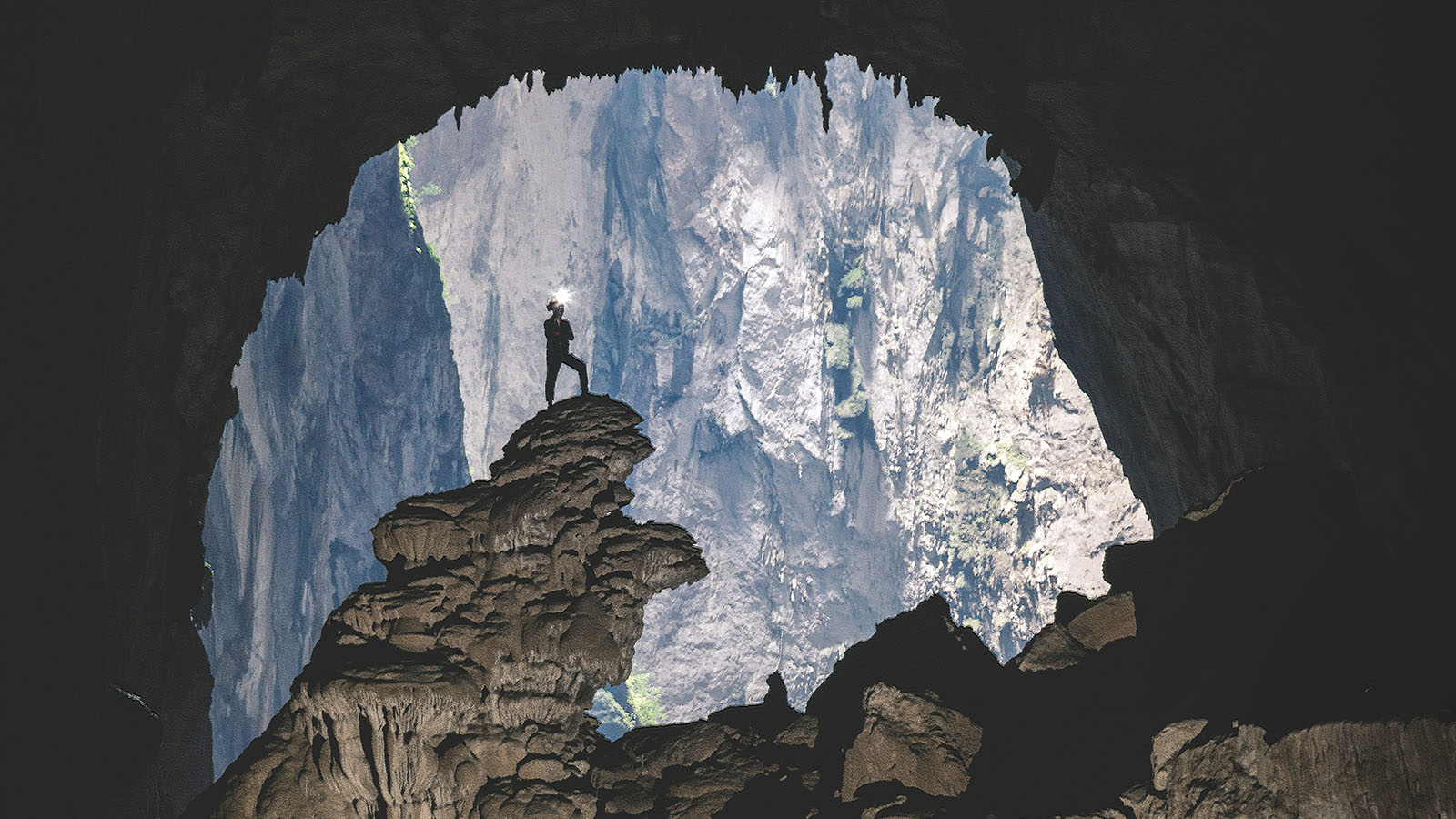




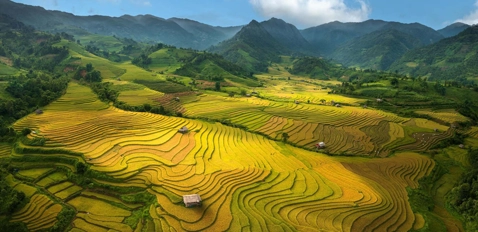







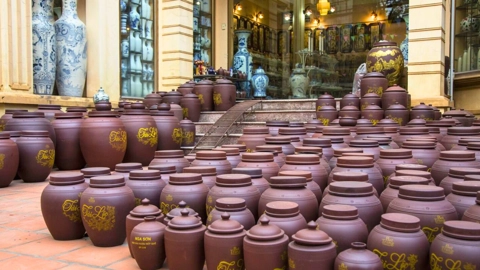
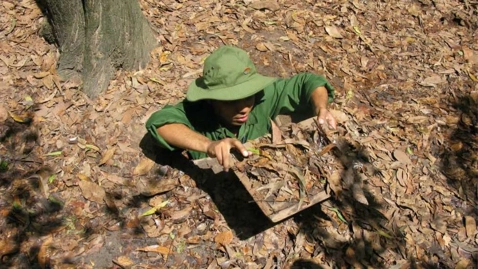
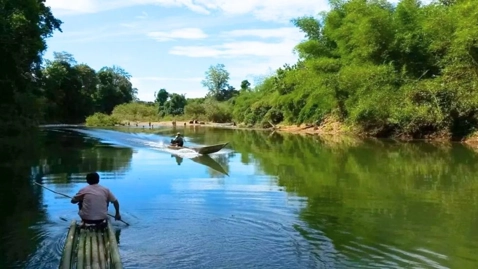

















Comment